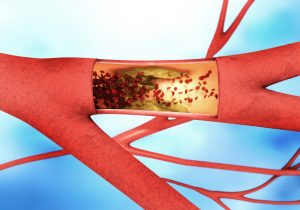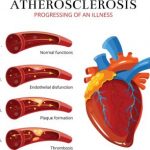 Hypertension, high cholesterol, and type 2 diabetes are linked to a greater risk of peripheral artery disease (PAD) in men.
Hypertension, high cholesterol, and type 2 diabetes are linked to a greater risk of peripheral artery disease (PAD) in men.
An atherosclerotic syndrome characterized by blockage of the arteries, especially in the extremities, peripheral artery disease affects eight to 10 million people in the U.S. It is associated with reduced function and a higher risk of negative cardiovascular outcomes, including death. Even though it is a serious and common condition negatively affecting the quality of life of the patients, PAD continues to be underdiagnosed and, as a result, undertreated.
Advertisement
The study followed 45,000 participants for nearly two decades. The researchers found a higher risk of PAD in those with risk factors of smoking, hypertension, high cholesterol, and type 2 diabetes.
During the follow-up period, the researchers found that each risk factor was independently associated with a higher risk of PAD. The risk increased with every additional risk factor present, as well as with the duration of type 2 diabetes and high cholesterol.
The authors wrote, “In conclusion, in this well-characterized cohort of U.S. men followed up for longer than two decades, smoking, hypertension, hypercholesterolemia, and type 2 diabetes each demonstrated strong, graded, and independent associations with risk of clinically significant PAD.”
Mediterranean diet may lower the risk of peripheral artery disease: Study
The Mediterranean diet may lower the risk of peripheral artery disease, according to research findings. The Mediterranean diet is characterized by a high consumption of fruits and vegetables, lean proteins, fish, healthy oils like olive oil, minimal sugar, and a glass of red wine. The Mediterranean diet has been extensively studied and has been shown to improve heart and brain function.
The study included 7,477 participants all without PAD at the start of the study. The participants did have type 2 diabetes and at least three other cardiovascular risk factors. The participants either received a Mediterranean diet supplemented with extra-virgin olive oil, a Mediterranean diet supplemented with nuts, or counseling on a low-fat diet (control group). All participants completed a comprehensive dietary educational program on a quarterly basis.
There were 89 confirmed cases of PAD at the mid-point follow-up. Mediterranean diet was associated with a reduced risk of PAD.
The authors wrote in conclusion, “To our knowledge, this is the first randomized primary prevention trial to suggest an association between a dietary intervention and [reduction in] PAD. These results are consistent with previous observational studies and relevant from a public health perspective.”
Other tips to lower the risk of peripheral artery disease
 Peripheral artery disease is a circulatory problem that causes narrowing of the arteries constricting the blood flow. PAD often affects the extremities like hands and feet, because these areas are unable to get a healthy blood circulation. This can result in pain, numbness, and even cold hands and feet.
Peripheral artery disease is a circulatory problem that causes narrowing of the arteries constricting the blood flow. PAD often affects the extremities like hands and feet, because these areas are unable to get a healthy blood circulation. This can result in pain, numbness, and even cold hands and feet.
PAD can also stem from atherosclerosis, which is hardening of the arteries as a result of fatty plaque buildup along the artery walls.
Some effective ways to reduce your risk of or treat PAD include quitting smoking, exercising regularly, and eating a healthy diet.
The goals of PAD treatment is to reduce and manage symptoms, as well as slow down the progression to atherosclerosis throughout the body. Lifestyle changes above can help improve the outcomes, but medical intervention, too, can be beneficial for PAD treatment.
Advertisement
Other treatments include cholesterol-lowering medications, high blood pressure medications, blood sugar-controlling medications, medications to prevent blood clots, and symptom relief medications.
In some patients, surgery is required to treat PAD. Examples include angioplasty, bypass surgery, and thrombolytic therapy.
By combining lifestyle changes with medications, patients can have greater success in reducing their risk of complications associated with peripheral artery disease.
